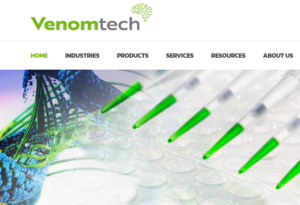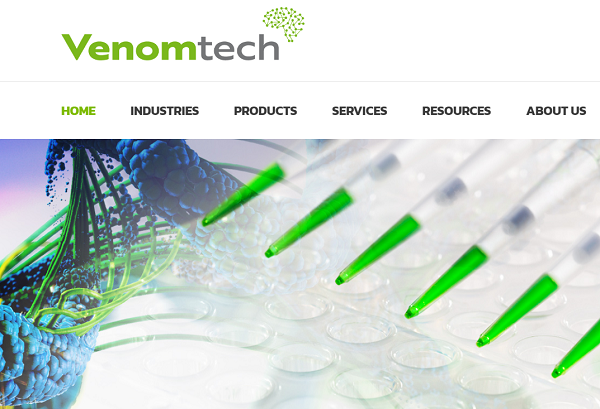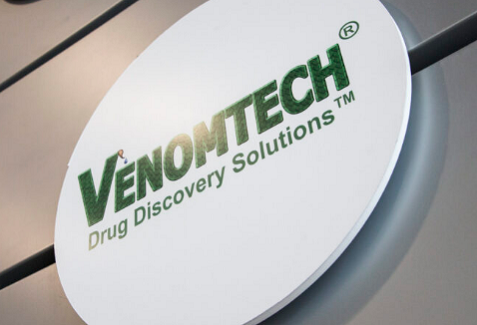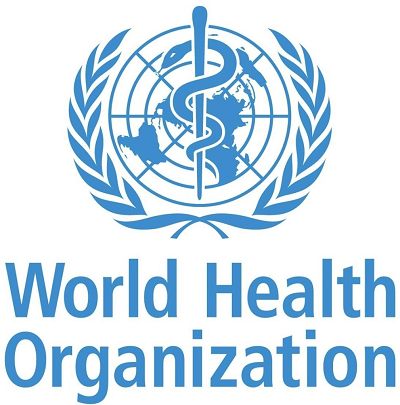VenomTech company announces massive library of SNAKE VENOM peptides for pharmaceutical development; “nanocarriers” stabilize snake venom in WATER (PubMed)
Wed 10:28 am +00:00, 13 Apr 2022 3
Astonishingly, it is rapidly becoming apparent in the aftermath of the Dr. Bryan Ardis revelations about snake venom origins for covid-19 that many people — even some in alt media — are completely unaware that snake venom is commonly used as the starting point for pharmaceutical research.
Earlier today, a UK company literally named “Venomtech” announced a massive venom peptide and venom fragment library to be used for drug discovery by pharmaceutical companies (as well as pesticide used for agricultural companies).
The news was widely covered in the biotech media, including at News-Medical.net, which published the announcement, “Venomtech announces new drug development collaboration with Charles River.”

From that announcement:
Venomtech is collaborating with Charles River Laboratories, International Inc. to help drug developers explore venom-derived compounds for a wide range of therapeutic targets. This newly formed collaboration will bring together Venomtech’s biology expertise and vast venom-derived peptide library, with Charles River’s drug development and screening knowhow, providing pharmaceutical manufacturers with a one-stop service to explore this unique natural resource.
Venomtech’s Targeted-Venom Discovery Array™ (T-VDA™) libraries provide researchers with a straightforward solution to rapidly screen thousands of individual venom fragments, with each array specifically designed to maximise hits for a specific target.
The announcement carries this statement from Venomtech CEO Paul Grant:
Venomtech has been at the forefront of venom research for drug discovery for more than a decade… we can now showcase our innovative technology, introducing the wider industry to the potential of venoms for the successful delivery of more leads, more quickly, for a broad range of [cellular] targets.
…we can now offer our clients access to bespoke venom libraries, potentially accelerating their [drug] discovery pipelines using this powerful natural resource.

The Venomtech company is described as follows:
Venomtech is a global leader for venom research enterprises, based out of world-class laboratories at Discovery Park in Kent, UK.
…[we are] helping our customers worldwide make pioneering advances in drug discovery, crop protection, and cosmetics. We have the largest library of naturally sourced venom-derived compounds in the UK, from a growing collection of vertebrate and invertebrate species
Note that Venomtech’s clients include pharmaceutical companies, pesticides companies and cosmetic product manufacturers. Venom-based molecules are widely used in drug research and other areas of biotech.
So to those in the corporate media — and even in alt media — who are expressing shock and dismay at Dr. Ardis claiming that snake venom is the most likely origin for research into SARS-CoV-2 gain-of-function enhancement or even covid vaccines, you are ignorant of the state of the art in biosciences.
The use of snake venom in pharmaceuticals isn’t a “conspiracy theory.” It’s a common practice, representing what most bioscience experts would describe as the cutting edge of drug discovery.
For the record, by the way, we are not ascribing any nefarious accusations to the Venomtech company here. We mention them solely to prove to any skeptics that snake venom is, in fact, widely used as a resource for pharmaceutical development (and it has been for decades).
What Dr. Ardis has claimed is not science fiction. It is the state of bioscience in 2022.
Anyone dismissing the “snake venom” theory in relation to covid treatments or vaccines is flatly ignorant of the resources used in today’s drug discovery pipelines.
20,000 varieties of venom peptides
As VenomTech says on their own drug discovery page:
Our naturally derived peptide, protein, and small molecule compounds enable pioneering perspectives and solutions that have proven effective even on hard-to-hit targets where traditional approaches have previously failed. They affect a variety of molecular targets, such as ion channels, GPCRs and enzymes, with a high degree of selectivity and potency, reaping the benefits of millions of years of evolution rather than just over a hundred years of drug discovery.
Our customers have access to a library of 20,000 peptides, proteins, and small molecules derived from venoms – the largest library of naturally sourced compounds available in the UK – supplied as an innovative Targeted-Venom Discovery Array™ and custom arrays with a demonstrated track record of success for drug discovery applications.
We believe the Venomtech company very likely has a very bright future in its industry, by the way. “Biomimicry” means copying nature, and Big Pharma has a long history of pirating molecules from nature and turning them into multi billion-dollar profit centers. The best ideas come from nature, of course, even though the FDA and other health regulators claim natural molecules are useless and can’t be considered “medicine.” Yet Big Pharma gets most of its blockbuster drugs from natural molecules, such as lovostatin molecules found in red yeast rice (now turned into high profit statin drugs).
Never forget that the symbol for the World Health Organization is a snake and a staff that dominate the planet:

And the symbol of the American Medical Association (AMA) is a serpent encircling a staff, resembling a DNA strand while also representing the idea of the serpent’s venom:

World Economic Forum brags about drugs made from venom, admits ability to synthesize venom particles using RNA technology
If you’re looking for even more proof that snake venom is used in drug development, take a look at this article from the World Economic Forum, published as part of the WEF’s Annual Meeting of the Global Future Councils (2018):
Venomics – the scientific analysis of venom – offers some groundbreaking solutions to health problems from heart disease to diabetes, to managing chronic pain.
In fact, there are already six drugs approved for use by the Food and Drug Administration in the United States that are derived from venom.
But with 15% of the world’s animals producing venom of some kind, we have really only just begun to scratch the surface of their potential contribution to medicine.
Captopril is an angiotensin-converting enzyme (ACE) inhibitor, a type of drug used to treat high blood pressure and improve survival and reduce the risk of heart failure after a heart attack. Its main compound is derived from a species of pit viper found in Brazil.
Prialt, derived from the venom of cone snails, is used by some of the estimated 22 million adults in the US who suffer from severe and chronic pain.
Byetta is part of a new wave of drugs designed to lower blood glucose in patients with type 2 diabetes. Its key ingredient, exendin-4, is found in the saliva of the Gila monster, a large lizard species native to the southwestern US and northwestern Mexico.
Synthesizing snake venom for mass production, using RNA technology
Also from that WEF article:
One reason for the growing interest in this field is that advances in DNA and RNA technology allow research to be carried out much faster.
For instance, traditionally, live venom would be extracted from the animal, then injected into an unsuspecting live rodent or fish to study its impact.
Nowadays, the DNA and RNA of the venom have already been identified, which allows researchers to synthesize its components and test out their theories.
Nanocarriers can stabilize snake venom peptides for delivery via water
In response to Dr. Ardis’ revelations about the possibility of snake venom peptide delivery via water systems, there has been almost derision from certain influencers who claim that snake venom wouldn’t be stable in municipal water systems. In effect, they are absurdly claiming that tap water is anti-venom.
If that were true, all snake bites could simply be treated by drinking tap water.
In truth, the National Library of Medicine has published a study that reveals the existence of “nanocarriers” which can stabilize snake venom peptides in order to achieve delivery via water systems.
Entitled, “Nanoparticles Functionalized with Venom-Derived Peptides and Toxins for Pharmaceutical Applications,” the study abstract explains the mechanism by which snake venom peptides are stabilized in water and other solutions: (emphasis added)
Venom-derived peptides display diverse biological and pharmacological activities, making them useful in drug discovery platforms and for a wide range of applications in medicine and pharmaceutical biotechnology. Due to their target specificities, venom peptides have the potential to be developed into biopharmaceuticals to treat various health conditions such as diabetes mellitus, hypertension, and chronic pain. Despite the high potential for drug development, several limitations preclude the direct use of peptides as therapeutics and hamper the process of converting venom peptides into pharmaceuticals. These limitations include, for instance, chemical instability, poor oral absorption, short halflife, and off-target cytotoxicity. One strategy to overcome these disadvantages relies on the formulation of bioactive peptides with nanocarriers. A range of biocompatible materials are now available that can serve as nanocarriers and can improve the bioavailability of therapeutic and venom-derived peptides for clinical and diagnostic application. Examples of isolated venom peptides and crude animal venoms that have been encapsulated and formulated with different types of nanomaterials with promising results are increasingly reported.
Mic drop.
So for anyone who thinks that snake venom can’t be stabilized for delivery in water systems, they clearly don’t know the state of the science. Nanocarriers accomplish the task quite simply.
Once you become aware of Big Pharma’s technology, Dr. Ardis’ claims don’t seem outlandish at all
The bottom line in all this is rather clear: The only people lashing out against Dr. Ardis’ claims about snake venom in covid-19 vaccine formulations or snake venom peptide exposure through various environmental vectors (water, air, contact surfaces) are people who are uninformed about the widespread use of snake venom peptides in medical research and drug delivery systems.
The “shock” that many people experience when first hearing about snake venom used in drug development is an artifact of their lack of knowledge about modern medicine. The widespread use of venom from snakes, lizards, frogs, cone fish, stingrays and other creatures is well known in pharmaceutical research circles. It isn’t a “fringe” theory, nor a conspiracy theory.
It is a biological fact.
Millions of Americans swallow reptile venom every single day and call it “medicine”
Remember the WEF article linked above? It states, “Prialt, derived from the venom of cone snails, is used by some of the estimated 22 million adults in the US who suffer from severe and chronic pain.”
Millions more take Captopril, and there are several other venom-derived, FDA-approved drugs that are routinely prescribed by doctors.
The irrefutable fact is that millions of Americans swallow reptile venom every single day. They just call it “meds.”
The fact that most of them are completely ignorant of the origins of these substances doesn’t excuse those in the corporate media or indy media for also being ignorant. Those who are going to comment on Dr. Ardis and the snake venom theory should at least familiarize themselves with the state of the art in biosciences. If they fail to do that, they are just flinging nonsense much like Jen Psaki at the White House.
And haven’t we had enough of all the lies and ignorance in our world? Isn’t it time we listened to people whose words actually have a basis in fact rather than those who are pushing narratives to protect Big Pharma’s dishonest narratives?
Here are parts 1 and 2 of my recent interview with Dr. Bryan Ardis, followed by my Situation Update podcast which further analyzes what may be going on with snake venom and covid-19 (also now called “Covenom-19”):
Part 1:
Part 2:
And here’s my Situation Update podcast that discusses mRNA transfection transhumanism and the “reptilian-human hybrid” phenomenon:
Brighteon.com/dc8f6219-379f-478a-91d8-8e0beb55312e
https://www.naturalnews.com/2022-04-13-venomtech-company-announces-massive-library-of-snake-venom-peptides-for-pharmaceutical-deployment.html












A counter argument from Dr Amanda Vollmer; shared by Clive de Carle;
https://brandnewtube.com/watch/exposing-stew-peters-bryan-ardis-bullshit-video-watch-the-water_75zjGt144hoPQ2b.html?utm_source.
Clif High disagrees with Mike Adams:
Mike Adams is wrong, but provides a clear example…
clif high
Apr 12
Mike Adams is wrong.
In fact he is providing an example of an “unwarranted conclusion”. He says that “If city water could denature King Cobra snake venom, they all snakebites could be successfully treated with water,…”
This is a prime example of an unwarranted conclusion. He equates treatment for SNAKE BITES where the venom is INJECTED into a human, with venom being poured into public water supplies.
These are not the same thing, Mike. Not even close.
Shall we examine the part of the venom being full strength in the snake bite versus being deliberately diluted massively? Shall we examine the idea that the human body, where the snake injects its venom is NOT filled with chlorine, and oxygen, and is very unlikely to go through a deliberate oxygenation process, unlike public water supplies. So readers can see that Mike has no discernment, no nuance in his thinking here. Further there is this leap to equivalency of response in two, completely different environments, injecting a known poison versus diluting it massively into public water & hoping it would still be effective.
And, need we examine the idea that IF snake venom was all that powerful in water, all the snakes would have had to do would be to learn to swim & leave mouth open & all the critters in the lake would die & become easy dinners. We don’t see a lot of that behavior in snakes.
My question to Mike is WHY? Why do you want to promote this idea? What is in it for you? Are you aware of how bad it has made so many people feel? WTF dude?”
This was Mike Adams response to the theory of snake venom being in the water,
“In truth, the National Library of Medicine has published a study that reveals the existence of “nanocarriers” which can stabilize snake venom peptides in order to achieve delivery via water systems.
Entitled, “Nanoparticles Functionalized with Venom-Derived Peptides and Toxins for Pharmaceutical Applications,” the study abstract explains the mechanism by which snake venom peptides are stabilized in water and other solutions: (emphasis added)
Venom-derived peptides display diverse biological and pharmacological activities, making them useful in drug discovery platforms and for a wide range of applications in medicine and pharmaceutical biotechnology. Due to their target specificities, venom peptides have the potential to be developed into biopharmaceuticals to treat various health conditions such as diabetes mellitus, hypertension, and chronic pain. Despite the high potential for drug development, several limitations preclude the direct use of peptides as therapeutics and hamper the process of converting venom peptides into pharmaceuticals. These limitations include, for instance, chemical instability, poor oral absorption, short halflife, and off-target cytotoxicity. One strategy to overcome these disadvantages relies on the formulation of bioactive peptides with nanocarriers. A range of biocompatible materials are now available that can serve as nanocarriers and can improve the bioavailability of therapeutic and venom-derived peptides for clinical and diagnostic application. Examples of isolated venom peptides and crude animal venoms that have been encapsulated and formulated with different types of nanomaterials with promising results are increasingly reported.”